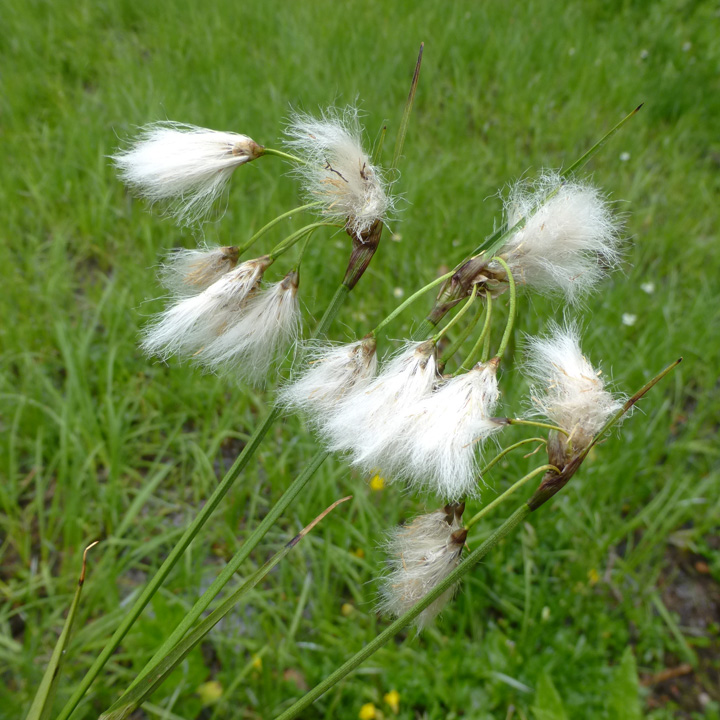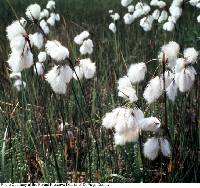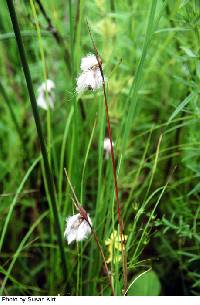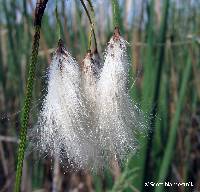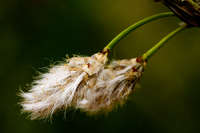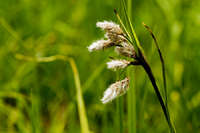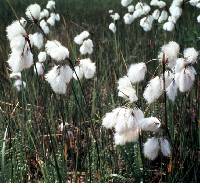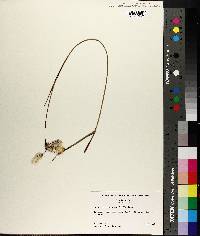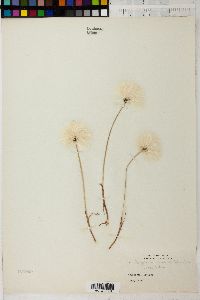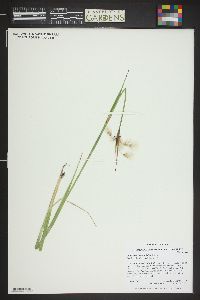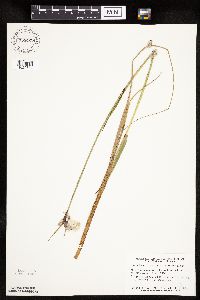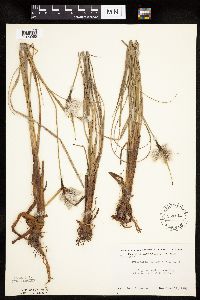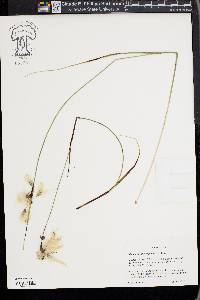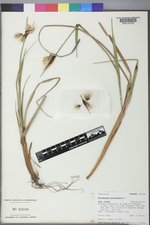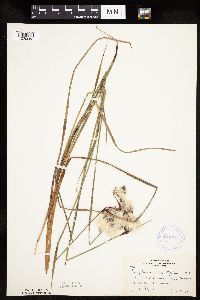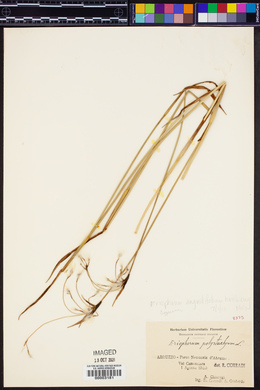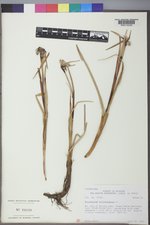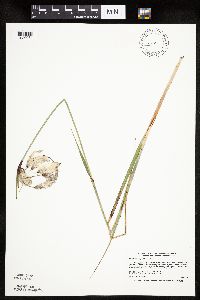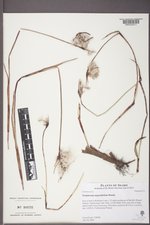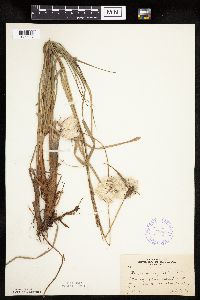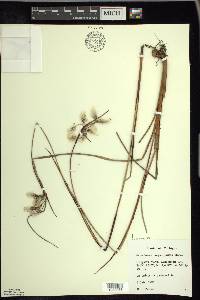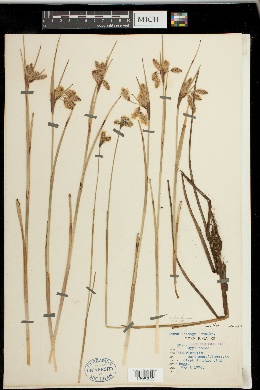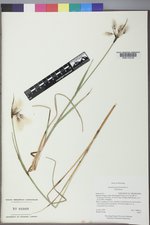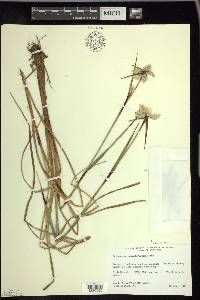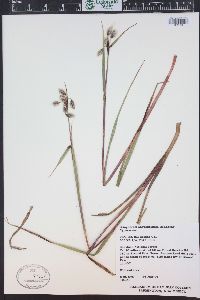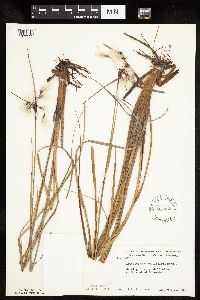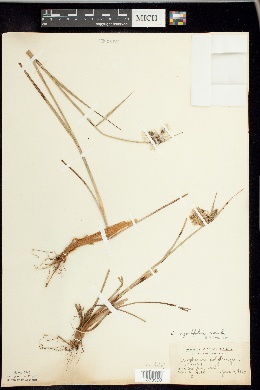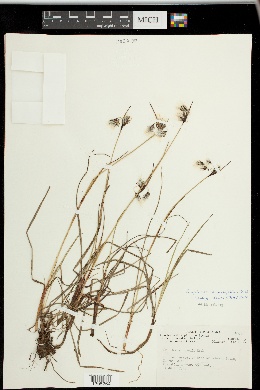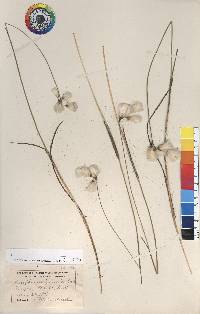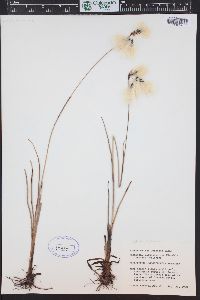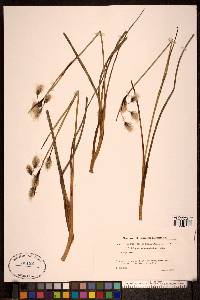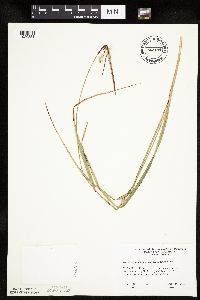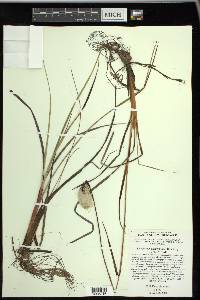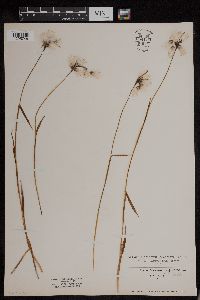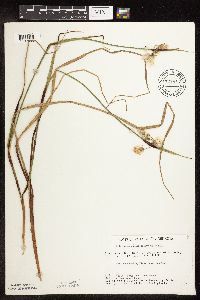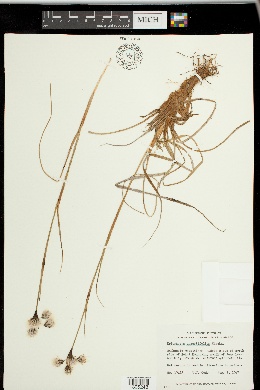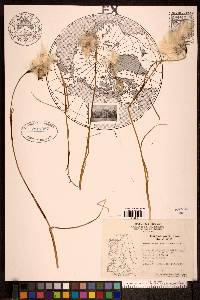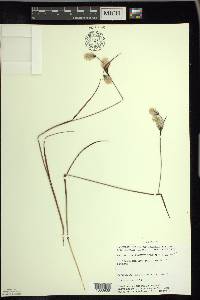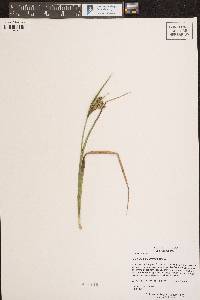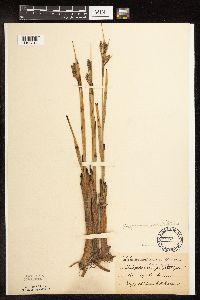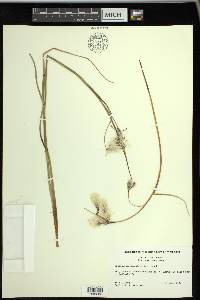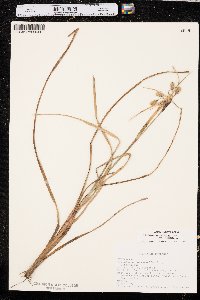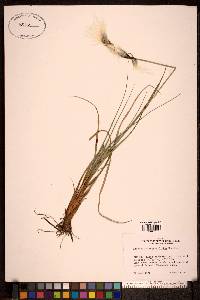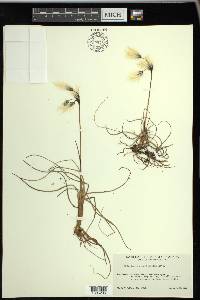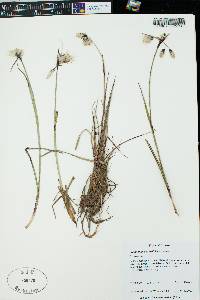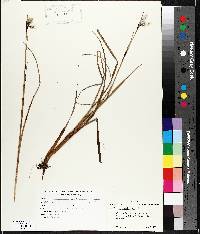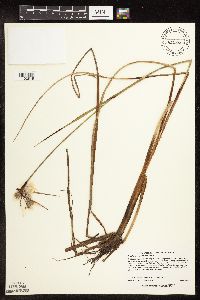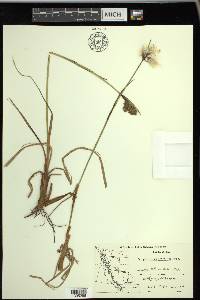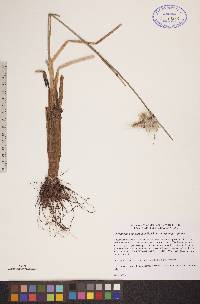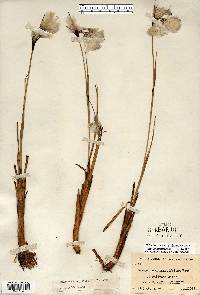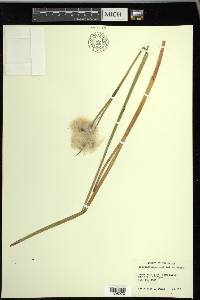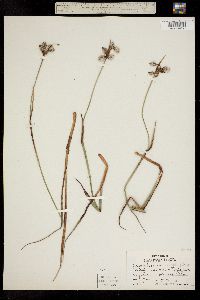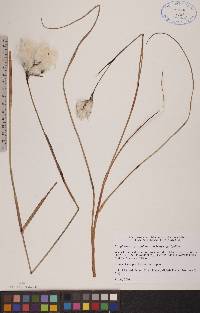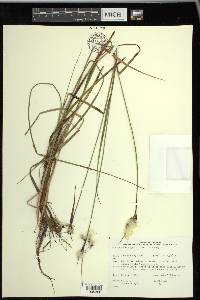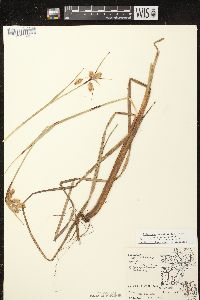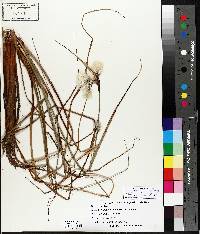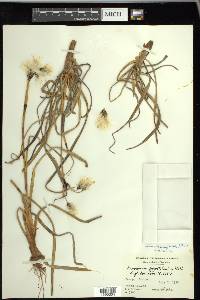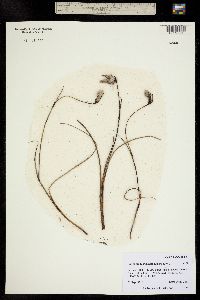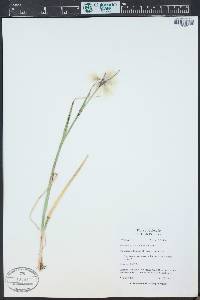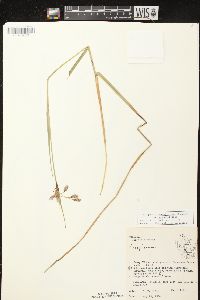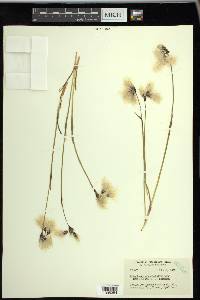Eriophorum angustifolium
|
|
|
|
Family: Cyperaceae
Tall Cotton-Grass, more...narrowleaf cottongrass
[Eriophorum ocreatum, moreEriophorum polystachion L. p.p.] |
Plants colonial from long-creeping rhizomes. Culms to 100 cm × (0.8-)1-1.2 mm distally. Leaves: blades flat, tip trigonous, channeled in cross section, to 40 cm × 1.5-6(-8) mm; distal leaf blade much longer than sheath. Inflorescences: blade-bearing involucral bracts 1-3, proximally blade, often sheath black, leaflike, longest 1-12 cm. Spikelets (1-)2-10, in subumbels, patent or pendent, ovoid, 10-20 mm in flower, 20-50 mm in fruit; peduncles 5-60 mm, smooth or scabrous; scales lanceolate or ovate, 5-10 mm, with prominent midrib fading proximal to tip, apex ± acute; proximal scales without lateral ribs. Flowers: perianth bristles 10 or more, white or pale yellow brown, 15-30 mm, smooth; anthers 2-5 mm. Achenes black, oblanceoloid, 2-5 mm. Eriophorum polystachion Linnaeus is a rejected name.
Perennial herb with long-creeping rhizomes, colonial 20 cm - 1 m tall Leaves: alternate, to 40 cm long, 1.5 - 8 mm wide, more or less flat with a three-angled tip, linear, channeled in cross-section, parallel-veined, with a sheathing base that encloses the stem. Sheaths tinged dark red at the top. Inflorescence: a terminal cluster of two to ten spikelets, subtended by leaf-like bracts. Bracts one to three, blade-bearing, unequal, dark red at the base, 1 - 12 cm long, the longest equal to or surpassing the inflorescence. Flowers: minute, subtended by a floral scale, lacking sepals and petals, bearing numerous hair-like bristles that form a dense, cottony tuft when the spikelet reaches maturity. Bristles persistent, white (sometimes yellowish), more or less straight, elongated, 1.5 - 3 cm long, much longer than the achene. Stamens three, exserted. Anthers 2 - 5 mm long. Pistil one. Style three-cleft. Fruit: a one-seeded achene, black, 2 - 5 mm long, two to three times as long as wide, reverse lance-shaped, three-angled. Seed with a thin, non-adherent wall. Culm: 20 cm - 1 m long, about 1 mm wide, nearly circular in cross-section, solid. Spikelets: on 0.5 - 6 cm long stalks, 1 - 2 cm long in flower, 2 - 5 cm long in fruit, egg-shaped. Floral scales spirally arranged, light brown to drab or gray or dark green, 0.5 - 1 cm long, egg-shaped or lance-shaped with a more or less pointed apex, midrib prominent (fading near tip). Similar species: The similar Eriophorum virginicum differs by having colored bristles (which do not elongate until August and September) and a single stamen. Eriophorum viridicarinatum is also similar but differs by lacking a reddish tinge on its leaf sheaths and inflorescence bracts. Flowering: late April to mid-May Habitat and ecology: Calcareous habitats and acid bogs. Occurence in the Chicago region: native Etymology: Eriophorum means "bearing cotton," from the Greek words erion (cotton or wool) and phoros (bearing). Angustifolium means narrow-leaved. Author: The Morton Arboretum Extensively colonial from creeping rhizomes; stems subterete, 2-6(-9) dm; sheaths with a dark border at the top; blades ±flat for most of their length, 2-8 mm wide, the uppermost one mostly as long as or longer than its sheath; invol bracts unequal, 2 or 3 foliaceous, the longest one equaling or generally surpassing the infl; spikelets 3-several, on compressed, smooth or minutely scabrous-hirtellous pedicels to 5 cm; scales tawny to drab or blackish-green, lance-ovate, with a slender midvein not extending to the very thin, hyaline-scarious tip; bristles white; anthers 2-4.5 mm; achene blackish, rather narrowly obovate, 2-3 mm, 2-3 times as long as wide; 2n=58, 60. Bogs and marshes; circumboreal, s. to Me., N.Y., Mich., Io., Colo., N.M., and Oreg. Fr June-Aug. (E. polystachion, a rejected name) Gleason, Henry A. & Cronquist, Arthur J. 1991. Manual of vascular plants of northeastern United States and adjacent Canada. lxxv + 910 pp. ©The New York Botanical Garden. All rights reserved. Used by permission. |
|
|
|

